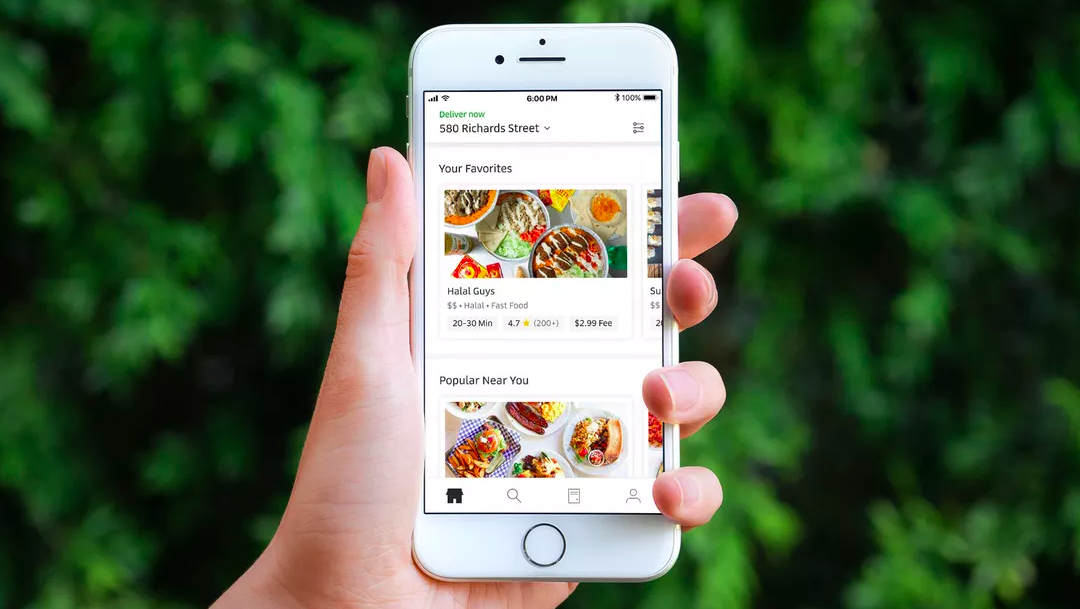Have you relied on third party delivery services to get you through COVID-19?
“Restaurants often lack the infrastructure for direct delivery and the customer reach that third-party delivery operators like Grubhub, Seamless, Eat24 and DoorDash provide,” says a report by CBRE Group.
So it’s understandable that restaurants would turn to ordering and delivery services with reduced capacities and dine-in bans. However, these services are expensive to use (at best) and exploitative (at worst).
Time to rethink your relationship with third-party bullies and take back control of your customers with first-party delivery.
First, let’s talk about how we got here, how you can successfully use a hybrid approach, and the future of delivery.
What happened to delivery during COVID
- Starting in March 2020, many independent restaurant operators flocked to third-party delivery services to survive dine-in bans.
- Industry consolidation ramped up, like Uber’s acquisition of Postmates.
- Large metropolitan cities began to impose caps on third-party delivery commission fees — most of which may be temporary and have already caused other unintended costs.
- Some POS systems launched their own services, like Toast.
- Smart operators are now standing up their own delivery service, upgrading their technology and keeping their employees busy.
- Consumer education is only beginning.
Pros and cons of third-party delivery services
The benefits of being listed on third-party platforms include:
- Customer convenience
- Marketing tool for discovery and acquisition
- Easy to upsell
Disadvantages:
- Losing 10-30% of every order to third-party fees
- No access to customer data
- No control of the delivery experience
- Loss of brand reputation if an order goes wrong
- Tablet hell
“I personally and selfishly want to have as much control over the customer journey and experience from beginning to end. So from the moment you say ‘I’m hungry’ to ‘That was delicious!’ I want to be with you every step of the way. First-party delivery allows me to choose the exact personnel, what packaging looks like, and what the white glove (or in this case plastic glove) service looks like.”
Nico Nieto, VP of Marketing at Roti Mediterranean
How to start your own delivery service
- Adapt the proper online ordering/delivery system. Most cloud-based POS systems now offer online ordering for cheap. Pro tip: Make sure it integrates with your POS system.
- Add high-quality photos. Remember, we eat with our eyes first!
- Invest in insurance.
- Use your former front-of-house employees as drivers, hire a dedicated delivery fleet, or partner with Relay, DoorDash Drive or InHouseDelivery.com to complete the last mile.
- Promote your ordering/delivery system everywhere.
Want a step-by-step guide to building an in-house delivery program? Watch Bo Bryant’s Restaurant Delivery Blueprint.
How to convert third-party customers to your delivery service
Continue to use third-party services to attract new customers, but with these adjustments…
- Don’t link to third party platforms. Promote your own delivery service instead on your website, social media, email newsletters, and Google My Business listing.
- Raise your prices on third-party sites.
- Limit your third-party menu. Make sure your best selling or limited time offers are only available to customers who order direct.
- Add a postcard inside the third-party bags that educates customers on the benefits of ordering direct. Try: “Did you know? Third-party services charge the restaurants up to 30% plus the delivery fees they charge to you? Help us avoid those fees by ordering directly from our site.” or “Ordering directly through us has its perks! When you call us at [insert phone #] or order directly at [URL to order] you’ll save 10% off your order! Just our way of saying thank you for making the extra effort to support us.”
- Make your delivery experience seamless and personal so customers come back for more.
Armed with customer data, you can now reach out to customers to encourage repeat orders.
For more on first-party delivery
Check out the Restaurant Technology Network’s FREE Native Delivery TCO Calculator, a Google spreadsheet packed with precise formulas for evaluating native (first-party) delivery vs. delivery as a service (DAAS) vs. third-party.
For additional considerations, check out Toast’s article on “Should I Use Third Party Delivery or Create My Own?”
For help on switching from third-party to first-party delivery, listen to hospitality expert Rev Ciancio’s presentation on how to own your delivery customers. When you’re ready to up-level, check out his 4-week bootcamps on third to first-party conversion.
The future of food delivery
A study from Deloitte shows that 23% of consumers expect to continue ordering more delivery in a post-pandemic world, while most indicate they don’t object to paying more for delivery.
That’s why getting the right systems in place is more important than ever.
According to The Spoon:
“Right now, most [mom and pop shops] can’t afford to build out their own mobile ordering and payments system and pay employees to deliver the food. That territory currently belongs to the Paneras and Panda Expresses of the world, which brings me to our second point: disrupting third-party delivery.
[Panelists at] Smart Kitchen Summit (SKS) 2020 predicted that the act of unseating third-party delivery apps’ dominance over restaurants won’t come from imposing more rules and regulations, but from someone bringing a better, cheaper solution to the table. As more restaurant chains with deep pockets take back more of their delivery stack, those solutions might very well surface in the process.”
You may also be interested in…
- Your restaurant may close again. Here’s how to prepare for it. >> read more <<
- What donut shops & pizzerias can learn from each other right now >> read more <<
- QR codes for restaurants >> read more <<
- Catering in the midst of a pandemic >> read more <<


